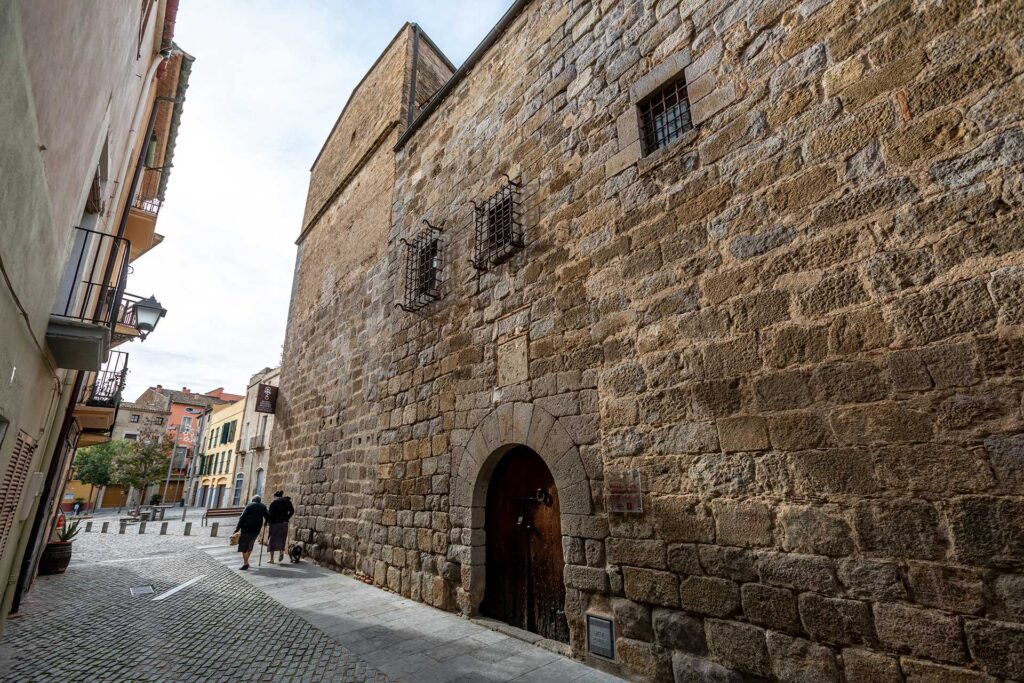
A museum housed in a Gothic building built in around 1336. In the past, it integrated two functions which were typical of the medieval town: the Curia, the judicial headquarters; and the prison, where the sentenced convicts were sent. This judicial and criminal complex was the symbol of the town’s power in the county, as the capital of the County of Empúries. In the Curia, the façade facing Plaça de Jaume I (formerly the Plaça del Gra) stands out, with its restored Gothic windows and the notable carved corbels on the inside. The Castelló d’Empúries prison is a unique model of a prison under the Old Regime. Between the 17th and 19th centuries, the prisoners left an imprint of their moods, in the form of numerous graffiti pieces, filled with resilience and symbolism on these dark and unsanitary cells. The museum also includes one of the most important collections in Catalonia of matzevot; Jewish tombstones from the town’s old cemetery.
Photograph of the square where the old Castelló Curia Prison building is located. It is part of the Rubaudonadeu Collection and dates back to the end of the 19th century. You can still see a walled entrance and next to it the door, which is not the original one. The building has three floors and it is thought that the third floor was added at a later date. The outbuildings of the town’s prison, already documented in the 13th century were located on the ground floor. In the rest of the photograph, we can see the square with the side arches, a space where the market was held. The photograph was taken by Josep Maria Cañellas in 1888 and it is preserved in the Fages de Climent Library in Figueres.
Location
-
Carrer De La Presó 8, 17486 Castellón de Ampurias, Provincia de Gerona, España


Add a review